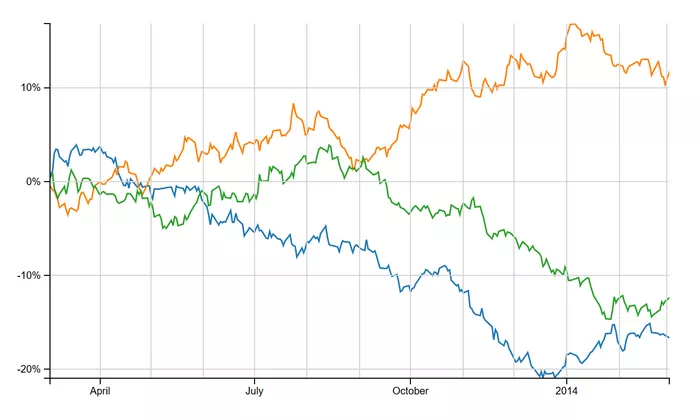In the world of personal finance, unexpected events can have a significant impact on our ability to manage debts and maintain financial stability. One such event is disability, which can disrupt income streams and make it challenging to meet regular financial obligations, especially those related to credit. Credit disability insurance plans are designed to provide a safety net in such situations. They offer protection and several benefits to borrowers, ensuring that their credit obligations can still be met, at least to some extent, even when they are unable to work due to a disabling condition. Understanding the benefits of a credit disability insurance plan is crucial for individuals who rely on credit and want to safeguard their financial well-being in case of disability.
Protection Against Default
1. Ensuring Loan Payments Are Made
One of the primary benefits of a credit disability insurance plan is that it helps protect borrowers from defaulting on their loans. When a person becomes disabled and is unable to earn an income, making regular loan payments, such as those for a mortgage, car loan, or credit card debt, can become impossible. Credit disability insurance steps in to make those payments on behalf of the borrower. For example, if an individual has a mortgage and suffers a disabling injury that prevents them from working, the credit disability insurance will cover the mortgage payments for a specified period. This ensures that the borrower does not fall behind on their loan, which could otherwise lead to foreclosure or damage to their credit score. By maintaining loan payments, the borrower can also keep their assets, like their home or car, secure.
2. Maintaining Credit Score
Defaulting on loans has a severe negative impact on a person’s credit score. A good credit score is essential for various financial activities, such as obtaining future loans, getting favorable interest rates, and even renting an apartment or getting a job in some cases. Credit disability insurance helps preserve the borrower’s credit score by ensuring that payments are made on time. For instance, if a person has a credit card with a balance and becomes disabled, the insurance will pay the minimum payment or the full balance, depending on the policy terms. This continuous payment history shows lenders that the borrower is still creditworthy, even during a difficult period. Without this protection, a single missed payment due to disability could start a downward spiral in the credit score, making it much harder for the individual to recover financially once they are able to work again.
Peace of Mind
1. Reducing Financial Stress
Disability can bring a great deal of financial stress, especially when there are bills to pay and no income coming in. Knowing that there is a credit disability insurance plan in place can provide significant peace of mind. The borrower does not have to constantly worry about how they will pay their debts if they become disabled. For example, a self-employed individual who has a business loan and a family to support may be extremely anxious about the financial consequences of a potential disability. With credit disability insurance, they can focus on their recovery and rehabilitation, knowing that their loan payments are being taken care of. This peace of mind can also have a positive impact on the individual’s overall well-being and mental health during a challenging time.
2. Planning for the Unforeseen
Life is unpredictable, and disabilities can happen to anyone at any time. A credit disability insurance plan is a form of financial planning for the unforeseen. It allows individuals to be proactive in protecting their financial future. Instead of leaving themselves vulnerable to the financial risks associated with disability, they can have a safety net in place. For instance, a young professional who just bought a house and has a mortgage may not have a large emergency fund or other assets to fall back on in case of disability. By having credit disability insurance, they are better prepared to handle such a situation and can continue to build their financial life without the fear of a single event derailing it completely.
Flexibility in Recovery
1. Allowing Focus on Rehabilitation
When a person is disabled, their main priority should be on getting better and rehabilitating. Credit disability insurance gives them the flexibility to focus on their recovery without the added pressure of having to work to pay off debts. For example, if someone has a back injury that requires months of physical therapy and rest, they can take the time they need to heal without worrying about losing their home or car due to missed loan payments. This can lead to a more effective recovery process as the individual can fully commit to their rehabilitation program, which may include medical treatments, exercise, and rest. The insurance coverage provides the financial support necessary to allow for this focus on health, which in turn can potentially lead to a faster return to work or a better quality of life even if the disability is long-term.
2. Adapting to New Circumstances
Disability may also require individuals to make changes in their lives and careers. They may need to retrain for a different job or make modifications to their living environment. Credit disability insurance can provide the financial flexibility to make these adjustments. For instance, if a person becomes disabled and can no longer work in their current profession, they may need to take courses to learn a new skill. The insurance can help cover the costs of these courses or provide additional financial support during the transition period. It can also assist with making home modifications, such as installing ramps or widening doorways, to accommodate a disability. This flexibility allows individuals to adapt to their new circumstances and work towards a more sustainable future.
Coverage Duration and Limits
1. Duration of Coverage
Credit disability insurance plans typically have a specific duration of coverage. This can vary depending on the policy and the insurer. Some plans may provide coverage for a few months, while others may offer coverage for several years. For example, a policy might cover loan payments for up to two years from the onset of disability. The duration of coverage is an important factor to consider when choosing a plan. Longer coverage periods can provide more comprehensive protection, especially for disabilities that may take a long time to recover from. However, policies with longer coverage durations may also have higher premiums. It’s essential for borrowers to assess their own needs and the likelihood of a long-term disability based on their age, occupation, and health history to determine the appropriate coverage duration.
2. Coverage Limits
There are also limits to the amount of coverage provided by credit disability insurance plans. The insurance may cover a certain percentage of the loan payment or a fixed dollar amount. For instance, a policy might cover up to 80% of the monthly mortgage payment or a maximum of $1,500 per month for all loan payments combined. These limits are designed to balance the cost of the insurance for the insurer and the protection provided to the borrower. Borrowers should be aware of these limits and make sure that the coverage is sufficient to meet their essential loan obligations. If the coverage limit is too low, they may still face financial difficulties in paying off the remaining portion of their loans during a disability.
Eligibility and Premiums
1. Eligibility Requirements
To qualify for a credit disability insurance plan, there are usually certain eligibility requirements. These can include factors such as age, health, and employment status. Most plans require the borrower to be of a certain age, typically between 18 and 65. The borrower’s health is also a consideration, and they may need to provide medical information or undergo a medical examination, depending on the insurer and the amount of coverage. Employment status is important as well. Some plans may only be available to individuals who are employed full-time or have a regular source of income. For example, a self-employed person may have different eligibility criteria compared to an employee of a large corporation. It’s crucial for borrowers to understand the eligibility requirements before applying for a plan to avoid disappointment or being denied coverage.
2. Premiums
The cost of a credit disability insurance plan is determined by several factors, including the borrower’s age, health, the amount of coverage, and the type of loan being insured. Generally, younger and healthier individuals will have lower premiums as they are considered a lower risk. The more coverage a borrower wants, the higher the premium will be. For example, a person who wants to insure a large mortgage payment will pay a higher premium than someone insuring a smaller credit card balance. The type of loan also matters. Mortgages are typically more expensive to insure than credit card debts because the loan amounts are usually larger and the payment periods are longer. Borrowers should shop around and compare premiums from different insurers to find the best value for their money. They should also consider the benefits and coverage provided along with the premium cost to make an informed decision.
Exclusions and Limitations
1. Pre-Existing Conditions
Like many insurance policies, credit disability insurance plans often have exclusions for pre-existing conditions. If a borrower has a disability or a medical condition that existed before applying for the insurance, the policy may not cover a disability related to that pre-existing condition. For example, if a person has a history of back problems and then applies for credit disability insurance, a subsequent disability related to their back may not be covered. However, some policies may have a waiting period or may cover pre-existing conditions under certain circumstances, such as if the borrower has been symptom-free for a specific period. It’s important for borrowers to disclose any pre-existing conditions accurately when applying for the insurance to avoid potential claim denials later.
2. Types of Disabilities Covered
Not all types of disabilities are covered by credit disability insurance. The policy will define the specific types of disabilities that are eligible for coverage. For instance, some policies may only cover disabilities that prevent the borrower from working in their current occupation, while others may cover any disability that renders the borrower unable to work in any occupation. Mental health disabilities may also have different coverage criteria. Some policies may cover mental health conditions that result in a significant impairment of daily functioning, while others may have more restrictive definitions. Borrowers should carefully review the policy to understand exactly what types of disabilities are covered and what the requirements are for proving a disability claim.
How to Choose the Right Plan
1. Assessing Your Needs
The first step in choosing the right credit disability insurance plan is to assess your own financial needs. Consider your outstanding debts, including mortgages, car loans, and credit card balances. Think about how much you would need to have covered in case of disability to avoid default and maintain your financial stability. Also, consider your personal circumstances, such as your age, health, and occupation. If you are in a high-risk occupation or have a family history of certain medical conditions, you may want to look for a plan with more comprehensive coverage. For example, if you work in a physically demanding job, you may be more likely to experience a disabling injury, so a plan with longer coverage duration and higher coverage limits might be more suitable.
2. Comparing Policies
Once you have assessed your needs, it’s time to compare different credit disability insurance policies. Look at the coverage duration, coverage limits, eligibility requirements, premiums, and exclusions of each policy. Compare policies from different insurers to find the best combination of benefits and cost. Read the policy documents carefully and ask questions if you don’t understand something. You can also seek advice from a financial advisor or insurance agent. They can provide insights and help you make a more informed decision. For instance, an insurance agent can explain the differences between policies and help you understand how a particular policy would work in your specific situation.
Conclusion
A credit disability insurance plan offers several important benefits to borrowers. It provides protection against defaulting on loans, helps maintain a good credit score, offers peace of mind, and allows for flexibility in recovery. However, it’s essential to understand the details of the plan, including coverage duration, limits, eligibility requirements, premiums, exclusions, and limitations. By carefully assessing your own needs and comparing different policies, you can choose the right credit disability insurance plan to safeguard your financial future in case of disability. This type of insurance can be a valuable addition to your overall financial plan, providing a safety net when you need it most and helping you navigate the challenges that a disability can bring to your financial life.
Related topics:































